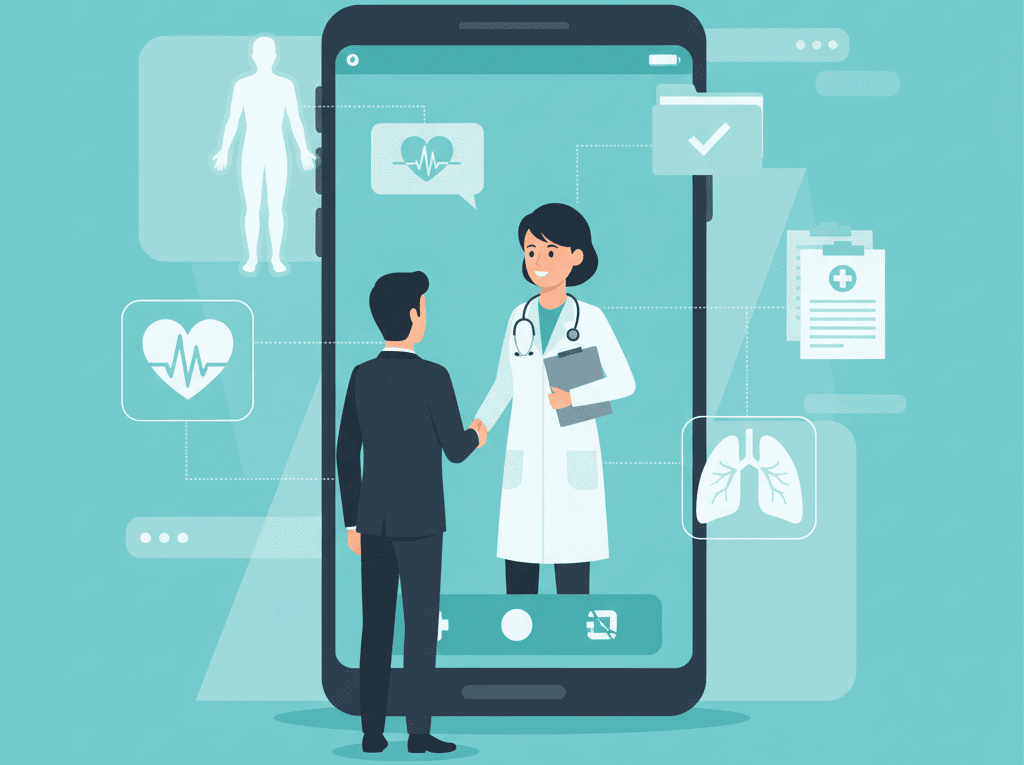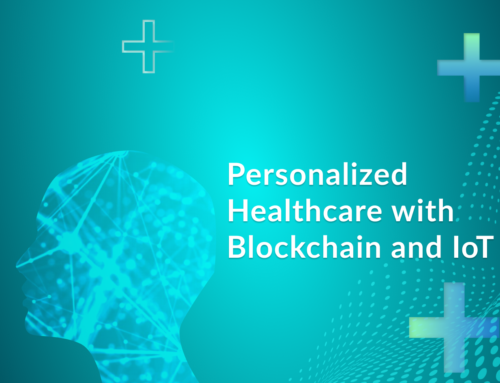The healthcare industry is driven by technological innovation and changing patient expectations.
Remote patients need remote healthcare for the delivery of medical services, monitoring, and care through digital platforms and connected devices.
It has evolved from a convenience to a necessity in modern medicine.
Remote healthcare, also known as telemedicine, has changed how patients get access to care, how providers deliver treatment, and how healthcare systems operate globally.
The Explosive Growth of Remote Healthcare
The remote healthcare market is experiencing huge growth.
Valued at approximately $9.25 billion in 2024, the global market is projected to surge to $43.85 billion by 2034, representing a compound annual growth rate (CAGR) of 16.84%.
Technological advancements show a fundamental shift in healthcare delivery philosophy.
Remote Patient Monitoring (RPM), also a critical subset of remote healthcare, demonstrates even more impressive momentum.
The RPM market stood at $39.54 billion in 2023 and is expected to reach $77.90 billion by 2029, growing at a CAGR of 11.97%.
Figures like this show the healthcare industry’s commitment to technology-enabled care models.
Core Technologies Powering Remote Healthcare
1. Artificial Intelligence and Machine Learning
Artificial intelligence is in the middle of the modern remote healthcare systems revolution.
AI algorithms analyze vast amounts of patient data in real-time and identify patterns that human observers can miss.
Predictive analytics is used in these systems, which enables healthcare providers to anticipate patient deterioration before it occurs.
AI-powered virtual assistants and chatbots utilize natural language processing to deliver personalized medication reminders and patient education.
They monitor medication adherence through data from wearables, electronic health records, and direct patient inputs.
Advanced behavioral analysis models can predict non-adherence risks, triggering proactive interventions that improve treatment outcomes.
According to healthcare leader surveys, 92% believe automation, largely driven by AI, is critical for addressing staff shortages by relieving healthcare professionals of repetitive tasks and processes.
2. Wearable Health Devices and Biosensors
Wearables have evolved into medical-grade monitoring tools.
Today’s wearables continuously capture vital signs, including heart rate, blood pressure, blood oxygen levels, glucose levels, and even electrocardiogram readings.
Devices like this transmit data directly to healthcare providers, creating a continuous stream of health information.
The cardiovascular monitoring devices market alone is valued at $3.31 billion in 2024 and is projected to reach $9.90 billion in the coming years, caused largely by advances in AI integration and wearable solutions.
Such growth reflects both technological sophistication and clinical validation of these devices.
Modern wearables provide personalized, continuous monitoring, empowering individuals to make informed, proactive health choices.
By detecting abnormalities early, these devices prevent potential health complications and reduce the burden on healthcare systems.
AI with wearable technology enables predictive health insights that were previously impossible.
3. Telehealth Platforms and Virtual Care
Telehealth platforms have matured significantly, offering comprehensive virtual consultation capabilities.
These platforms integrate video conferencing, secure messaging, electronic prescribing, and digital health records into unified systems.
The telehealth segment is expected to dominate market share at 49.5% in 2025, reflecting its central role in remote healthcare delivery.
Advanced telehealth solutions now incorporate AI-powered virtual sitters that enable a single remote staff member to monitor up to 25% more patients, dramatically increasing the capacity of healthcare inpatient teams.
Critical staffing shortages can be overcome with this technology while maintaining quality care standards.
4. Internet of Medical Things (IoMT)
The Internet of Medical Things connects medical devices, healthcare systems, and applications through online computer networks.
IoMT enables data exchange between devices and healthcare providers, creating integrated care ecosystems.
Connected devices include smart medication dispensers, remote vital sign monitors, implantable cardiac devices, and smart inhalers.
Real-time health monitoring, automated alerts for critical changes, and coordinated care among multiple providers can be achieved through IoMT.
IoMT infrastructure forms the backbone of comprehensive remote patient monitoring programs.
5. Cloud Computing and Big Data Analytics
Cloud-based platforms provide the computational power and storage capacity necessary for remote healthcare operations.
Enormous volumes of health data are generated by millions of connected devices and patient interactions.
Analytics extract meaningful insights from this data, supporting clinical decision-making and population health management.
Cloud-based storage enables secure data sharing among authorized healthcare providers, ensuring continuity of care regardless of physical location.
Scalable cloud solutions allow healthcare organizations to expand remote monitoring programs without prohibitive infrastructure investments.
Key Applications of Remote Healthcare Technology
Chronic Disease Management
Remote healthcare technology excels in chronic disease management, where continuous monitoring and early intervention prevent complications.
Patients with diabetes, hypertension, heart failure, and chronic obstructive pulmonary disease benefit enormously from remote monitoring programs.
These programs reduce hospital readmissions, improve medication adherence, and enhance quality of life.
Post-Operative Care and Recovery
Remote monitoring enables healthcare teams to track patient recovery after surgery without requiring frequent in-person visits.
Patients report symptoms, vital signs, and wound healing progress through connected devices and mobile applications.
This approach identifies complications early while allowing patients to recover comfortably at home.
Mental Health Services
Telepsychiatry and digital mental health platforms have expanded access to mental health services, particularly in underserved areas.
Video consultations, AI-powered mental health apps, and remote therapy sessions remove geographical and stigma-related barriers to treatment.
Digital therapeutic tools provide continuous support between traditional therapy sessions.
Rural and Underserved Communities
Remote healthcare technology addresses healthcare access disparities in rural and underserved communities.
Telemedicine connects patients with specialists located hundreds of miles away, eliminating travel burdens and expanding treatment options.
Mobile health clinics equipped with connected diagnostic devices bring advanced care to remote locations.
Benefits of Transforming Healthcare Delivery
Enhanced Access to Care
Remote healthcare overcomes geographical barriers, providing patients in rural areas, those with mobility limitations, and individuals lacking transportation with access to quality medical care.
Patients can consult with specialists regardless of physical location, receiving expert opinions without extensive travel.
Cost Reduction
Remote monitoring reduces healthcare costs by preventing expensive emergency department visits and hospitalizations.
Early detection of health deteriorations enables timely interventions that prevent costly complications.
Telemedicine consultations typically cost less than traditional in-person visits while delivering comparable outcomes.
Improved Patient Outcomes
Continuous monitoring enables personalized care adjustments based on real-time data.
Healthcare providers identify concerning trends early, adjusting treatment plans before conditions worsen.
This approach improves clinical outcomes, reduces complications, and enhances patient satisfaction.
Healthcare System Efficiency
Remote healthcare optimizes healthcare resource utilization.
Virtual visits reduce clinic congestion, allowing facilities to serve more patients.
Automated monitoring and AI-powered triage systems enable healthcare professionals to focus on patients requiring immediate attention.
This efficiency addresses workforce shortages while maintaining care quality.
Patient Empowerment
Remote healthcare technology empowers patients to actively participate in their care.
Access to personal health data through mobile applications increases health literacy and engagement.
Patients make informed decisions about their health, developing stronger partnerships with healthcare providers.
Challenges and Considerations
Data Security and Privacy
The transmission and storage of sensitive health information raise privacy concerns.
Healthcare organizations must implement robust cybersecurity measures to protect patient data from breaches.
Compliance with regulations like HIPAA (Health Insurance Portability and Accountability Act) requires stringent security protocols.
Insecure transmission of vital signs and poor integration with electronic health records create vulnerabilities that malicious actors can exploit.
Healthcare organizations must invest in encryption, secure authentication, and regular security audits to maintain patient trust.
Digital Literacy and Technology Access
To provide remote healthcare effectively, it requires patients to possess basic digital literacy and access to necessary technology.
Older populations and individuals with limited technology experience may struggle with remote monitoring devices and telehealth platforms.
This digital divide threatens to exclude vulnerable populations from remote benefits.
Healthcare providers must offer technical support, simplified interfaces, and alternative access methods to ensure equitable service delivery.
Addressing these disparities remains critical for widespread remote healthcare adoption.
Regulatory and Reimbursement Challenges
Regulatory frameworks for remote healthcare continue evolving, creating uncertainty for healthcare organizations.
Telemedicine licensure requirements vary by jurisdiction, complicating interstate practice.
Reimbursement policies for remote services remain inconsistent, with some insurers providing limited coverage for telehealth consultations and remote monitoring.
Advocacy for permanent telehealth reimbursement policies continues, particularly for Medicare beneficiaries who could lose access to remote services without legislative action.
Standardized regulations and sustainable reimbursement models are essential for long-term remote healthcare viability.
Clinical Integration Challenges
Integrating remote healthcare data into existing clinical workflows presents technical and operational challenges.
The vast volume of real-time health data from wearables can overwhelm clinicians, leading to alert fatigue and decreased effectiveness.
Healthcare systems must develop efficient data management strategies and clinical decision support tools that present actionable insights without information overload.
Poor integration with electronic health records creates fragmented care experiences and reduces remote monitoring effectiveness.
Interoperability standards and seamless system integration remain priorities for healthcare IT development.
The Future of Remote Healthcare Technology
Advanced AI and Predictive Analytics
Future remote healthcare systems will leverage increasingly sophisticated AI algorithms that predict health events with greater accuracy.
Machine learning models will identify subtle patterns indicating disease progression, enabling interventions months before clinical symptoms appear.
Predictive analytics will transition healthcare from reactive treatment to preventive medicine.
Enhanced Wearable Technology
Next-generation wearables will monitor an expanding array of biomarkers, including stress hormones, inflammatory markers, and early cancer indicators.
Non-invasive glucose monitoring will become standard for diabetes management.
Implantable sensors will provide continuous monitoring of critical health parameters for high-risk patients.
Virtual Reality and Augmented Reality
Virtual reality applications will transform physical therapy, pain management, and mental health treatment.
Patients will complete rehabilitation exercises in a virtual environment with real-time guidance from therapists.
Augmented reality will assist healthcare providers during remote consultations, overlaying diagnostic information and procedural guidance.
Blockchain for Health Data Security
Blockchain technology promises enhanced security and patient control over health data.
Decentralized health records will allow secure data sharing among authorized providers while stopping unauthorized access.
Patients will grant and revoke data access permissions, maintaining ownership of their health information.
5G Connectivity
The widespread deployment of 5G networks will enable real-time transmission of high-resolution medical imaging and video consultations without lag.
Enhanced connectivity will support remote surgery assistance, where specialist surgeons guide local providers through complex procedures using augmented reality and robotic systems.
Conclusion
Remote healthcare technology represents a fundamental transformation in medical care delivery.
The convergence of artificial intelligence, wearable devices, telehealth platforms, and advanced connectivity creates opportunities for improving health outcomes, expanding access, and enhancing efficiency.
While challenges related to privacy, equity, and integration remain, continued innovation and policy development are addressing these concerns.
The market growth projections from $9.25 billion in 2024 to over $43 billion by 2034 reflect both investment confidence and genuine clinical value.
Technology will advance, and its adoption will increase; remote healthcare will become the norm in standard medical practice.
Healthcare organizations, technology developers, and policymakers must collaborate to ensure remote healthcare realizes its potential while addressing ethical considerations and access disparities.
The future of healthcare is not merely remote; it is connected, predictive, personalized, and continuously evolving to meet patient needs in the digital age.








Leave A Comment